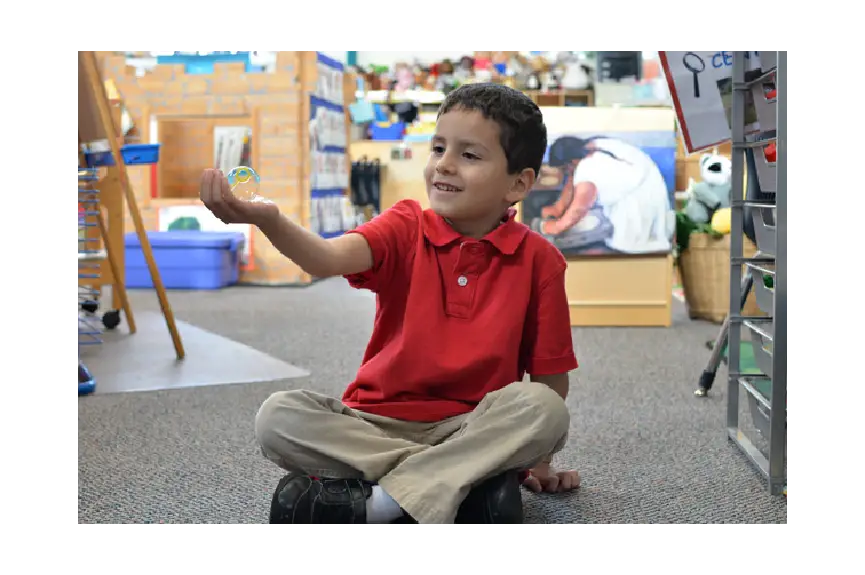Bubbles are a great tool to help with impulse control, because really – who doesn’t want to pop a bubble when it’s right in front of your face?
There are several ways you can use bubbles to teach kids about impulse control. We’ll share a few variations here. Feel free to make this your own based on the needs and personality of the kids you’re working with.
With a group of kids (you might need an assistant, or a bubble machine):
Move, Pause, and Stop
Make some signs that say move, pause, and stop (or print ours here.) Tell the kids that you’ll set a timer for 60 seconds and you’ll be blowing bubbles the whole time. But during the 60 seconds, you’ll hold up the different cards. If it says move, the kids can reach out to pop the bubbles. If it says pause, they should freeze in their place. At the end of the 60 seconds, you’ll hold up the sign that says stop and they should return to their seats.
This activity can be difficult for young kids who just want to pop the bubbles! But giving moments when they can pop the bubbles and others when they can’t is a good exercise in impulse control. We want to avoid putting kids, especially very young kids, in situations that would not be developmentally appropriate. Telling them not to pop the bubbles all together might prove too difficult for young kids, but giving them quick moments where they have to pause is a good strategy to help them build this skill.
With an individual or a group:
Hold It Steady...
Have the child sit on the floor and hold out her hand, palm side up. Blow the bubbles and ask her to try to catch it on her hand without popping it. Have the child hold the bubble on her palm as long as she can.

With groups of two or more:
POP! Hold! Ignore!
Take some bubbles out to recess. Have one bottle of bubbles for each pair of students. Let the students practice with each other. One student can blow the bubbles and give directions to the other student to either: pop, hold, or ignore. If the student blowing the bubbles says “Pop!” the receiving child can go crazy and pop as many bubbles as possible. The word “Hold!” means the receiving student must try to gently let a bubble alight on her hand and hold it there. This requires some control and focused concentration. The word “Ignore!” means the student must stand still and watch the bubbles all float away without touching any. This requires the most impulse control! After five minutes, let the pairs switch roles. Ask some questions at the end of the activity. Which did you like more – giving commands or receiving commands? Which command was the easiest? Which was the hardest? How did you manage to stand still and not pop bubbles when the command was Ignore? Are there other times when you really want to do something and you have to wait? What do you do during those times?
Share with
Related Resources